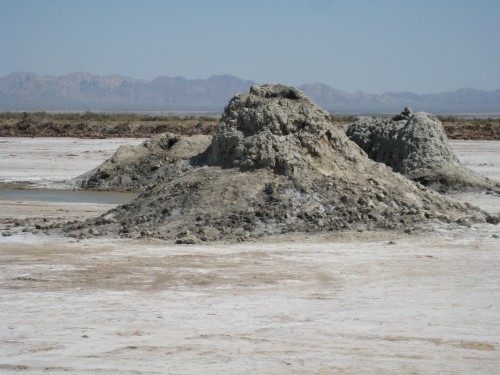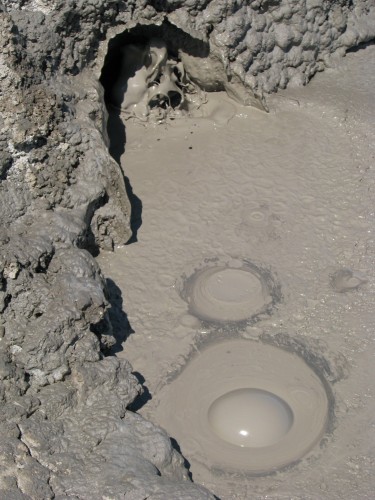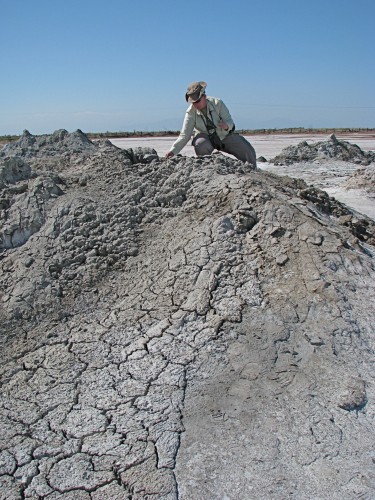Gryphons and pools near the Salton Sea
On the way home from San Diego Audubon Bird Festival, E and I stopped at a location near the Salton Sea where Gryphons are known to snore and slumber.
Gryphons, in this case, are geothermal features: modest but surprising cones built up by mud pots burbling out of the flat salty floor of the agricultural land around the Salton Sea. This gyphon patch is officially known as the Davis-Schrimpf Seep Field, and is in the midst of a geothermally active area sprinkled with power plants that harvest energy from spots where warm gases rise up through cracks from deep underground, heating the salty water and liquefied clays they percolate through. The gryphons lie sleepily in a field at the corner of two agricultural roads, some with briny pools of their own, tinted by hardy algae in red and green and orange, and others dry humps rising from the salty, cracked dirt.
For our trip we were lucky: though the ground had been wet recently, it was dry now, and we could approach the drowsy gryphons without sinking too deep. Some growled and burbled from deep inside without disgorging their liquid contents, while others sputtered and bubbled brownish gray mud, sometimes thin like a melted malt, sometimes almost thick as pudding. Even in the brisk wind that blew, a slightly sulphurous and organic smell could be detected. E wished to sample the waters, and I was the lackey, scooping up clays and biofilms into Falcon tubes, prepped for biological sampling. My hi-tech tools were a narrow stainless steel spatula and a lighter with a WWF wrestler on it, so it was work I could be trained to do. (Although having made that claim, I should add that the wind made using the cheap lighter difficult, and I actually worked up a blister firing it over and over to flash off the sterilizing ethanol between samples.)
Meanwhile, E handled the serious equipment for testing pH and conductivity of the pools (several times reading “over range”, since the water is a few times saltier than seawater), and a couple of hours passed while we collected data and samples, trying not to let papers and zip-bags blow into the pools in between. Clumps of visitors, locals and their friends, mostly, but others from farther places like Canada, came and went, asking questions about what caused the mudpots, what we were measuring, and if it was safe to walk around. Some folks climbed right to the top of active gryphons, unconcerned about their own safety or the condition of the formations. So far, this area is unprotected, and visitors have been fairly good about being careful. For now, the only marks people had left were footprints, and a few unwise vehicle tracks. As long as that’s the case, the gryphons will probably remain unfenced, regally accepting conscientious company into their realm.

How hot was the clay that was bubbling up?
Bill, by now I don’t remember if we measured the temp, but here’s a reference that might answer your question: http://onlinelibrary.wiley.com/doi/10.1029/2008JB006247/full